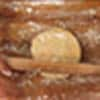Keys to Foolproof Pie Dough
It’s easy to make pie dough—just mix flour, water, and fat. But it’s even easier to get it wrong.
Perfect pie dough has just the right balance of tenderness to structure. The former comes from fat, the latter from long protein chains called gluten that form when flour mixes with water. Too little gluten and the dough won’t stick together—but too much and the crust turns tough. We’ve developed an approach that keeps gluten in check but also allows for an unusually supple dough that’s easy to handle and reduces the chance of overworking.
Use Two Fats
Butter contributes rich taste—but also water, which encourages gluten development. For a crust that's both flavorful and tender, we use a 3:2 ratio of butter to shortening, a pure fat with no water.
Create Layers of Flakiness
Traditional recipes process all the flour and fat at once, but we add the flour in two batches. We first process the fat with part of the four for a good 15 seconds to thoroughly coat it, then give the mixture just a few quick pulses once the remaining flour is added, so less of it gets coated. Besides providing protection against toughness, this approach aids in flakiness by creating two distinct layers of dough—one with gluten and one without.
Swap Water for Vodka
Gluten forms readily in water, but it won't form in alcohol. By replacing some of the water in our recipe with vodka (which contains 40 percent ethanol but just 60% water), we're able to add more liquid to the dough so it stays soft and malleable, but without increasing the danger of the crust turning tough. (Note: Any 80-proof spirit will work. The alcohol burns off in the oven, along with any flavor.)

